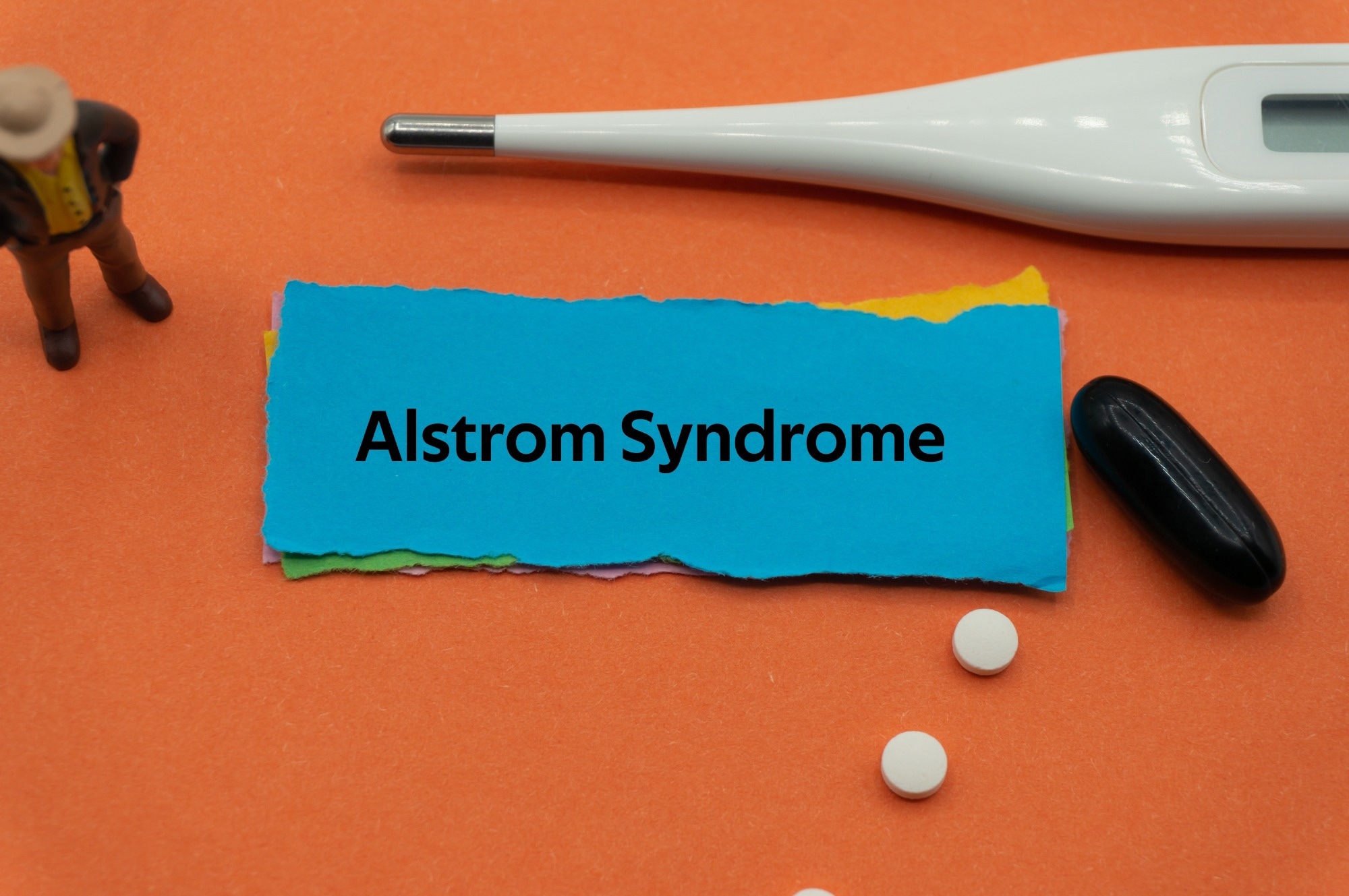Introduction
Physiological roles of ALMS1
Diagnosis
Challenges in diagnosing ALMS
Treatment
References
Further reading
Alstrom syndrome (ALMS) has been the focus of attention, among other ciliopathies, in research on the biological functions of cilia. The best mode of treatment for these disorders is ongoing. The ALMS1 gene has been associated with ALMS.
 Image Credit: evan_huang/Shutterstock
Image Credit: evan_huang/Shutterstock
Physiological roles of ALMS1
The ALMS1 gene has been the research focus because of its association with obesity and metabolic syndrome. This gene has already been found to be involved in the regulation of the energy balance in the body, along with appetite modulation. Therefore, deficits in the expression of this gene have been found to lead to obesity and diabetes.
Rodent studies indicate that this gene is required for proper ciliary function in the hypothalamic neurons responsible for energy and appetite homeostasis. Several other ongoing studies are looking to elucidate this role for the cilia. A related area of research is looking into the changes in the glucose transporter 4 (GLUT 4) profile of affected cells, as well as the ALMS1 in adipocyte differentiation. Proper maturation of fat cells is crucial in the homeostasis of both fat and glucose levels.
Another study area focuses on how the ALMS1 gene controls the cell cycle and intracellular trafficking. Cells from ALMS patients show alterations in actin morphology, cytoskeletal disruption, and deficits in endosome-associated recycling of cell components such as receptors.
Affected cells have also been found to be associated with lower rates of apoptosis, with an increase in cell cycle time. Thus, mutations in this gene produce widespread effects on gene expression relating to more than 500 genes.
Research into the linkage between these very different areas is ongoing, such as the role of the ALMS1 protein in the movement of GLUT4 endosomes along the cytoskeletal actin filaments to reach the plasma membrane. Researchers are also investigating the role of ALMS1 in transporting membrane components to the cleavage furrow between the daughter cells during cell division.
Alstrom Syndrome 'Living with a Rare Disease'
Again, cilia have been shown to regulate many diverse signaling pathways that control cell cycles and cell differentiation. Work is underway to establish the part played by ALMS1 in this area, including cochlear differentiation via planar cell polarity signaling through basal body anchoring or migration. Basal bodies are closely related to ciliary function and are the site of ALMS1 in the cochlear hair cells.
Diagnosis
Previously, genetic diagnosis of ALMS depended upon gene sequencing to look for mutations in the ALMS1 gene hotspots, where most of the mutations of clinical importance have been localized. In particular, attention was focused on exons 8, 10, and 16. This was, however, a time-consuming and expensive process, which limited its viability in clinical practice.
The next step was to employ arrayed primer extension technology, which looks for known mutations in a set, both in the ALMS1 gene as well as ten additional genes that are associated with Bardet-Biedl syndrome. This was relatively less expensive when compared to the previous diagnostic approach.
However, newer techniques with increased power to detect mutations have emerged. These include next-generation sequencing (NGS) technology, which could be in the form of panels of genetic tests, as well as whole-exome and whole-genome sequencing approaches. These technologies are more cost-effective and can be extended to a growing number of patients.
Challenges in diagnosing ALMS
Such techniques help not only diagnose the presence of ALMS in patients without any clinical features but can also be used to identify the presence of mutations in other genes. Currently, in the absence of the features adopted as diagnostic criteria, many cases of ALMS go undiagnosed. This could be due to over-dependence upon the ALMS1 mutations already identified.
In addition, the phenotype of ALMS is known to vary with the genetic background, including the presence of mutations on other genes or other loci on the ALMS1 gene. The importance of early diagnosis lies in the ability to offer early prevention and treatment of associated medical conditions. These early steps have the potential to minimize complications expected in the long term and predict their development based on the presence of other mutations.
Research into whole-exome sequencing is based upon the advantage it offers of rapidly analyzing all the exons in the genome, thus rendering all mutations visible, whether known or unknown, and whether they lie on the ALMS1 gene or not. The biggest obstacle is the sheer magnitude of the exome data that must be analyzed.

 Read Next: Bardet-Biedl Syndrome Pathophysiology
Read Next: Bardet-Biedl Syndrome Pathophysiology
Current studies are looking to develop the use of bioinformatics tools which will help to filter out relevant variants according to the filter chosen. This is essential in facilitating the identification of disease-causing mutations associated with atypical phenotypes that would not otherwise have been known to be part of the ALMS family.
Compound heterozygous and homozygous mapping approaches have also been useful in this regard. Research is proceeding into the use of combinations of different tools in consanguineous families and non-classical phenotypes to discover new genes that are involved in the etiology of the clinical features of ciliopathies.
 Image Credit: theshots.co/Shutterstock
Image Credit: theshots.co/Shutterstock
Treatment
Currently, therapy for patients with ALMS is limited. Studies are underway to develop treatment strategies that can limit or restrict the progression of disease manifestations.
Attention is primarily focused on the manner and the extent to which kidney, liver, or retinal function can be preserved or recovered by appropriate gene therapy. Gene therapies are the main target for development in these areas, which makes it more important to understand how these mutations operate to produce the manifestations of the disease.
Thus, current research into ALMS is driven by the need to understand the pathology of the condition as well as evolve effective treatment modalities that target molecular hotspots in affected or at-risk individuals. Some studies have experimented with using wild-type genes transduced by viruses in other conditions, such as polycystic kidney disease, with promising results. Stem cells are another avenue that remains to be explored in this field.
References
Further Reading